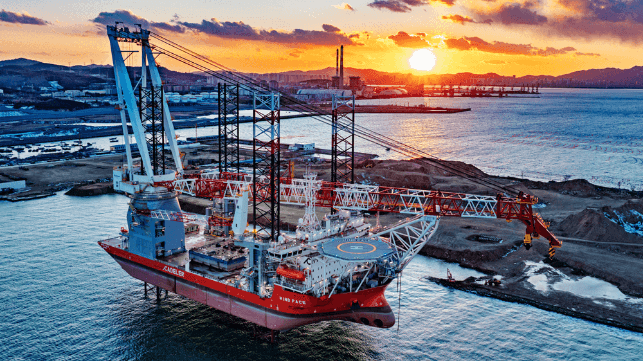OMSA Suggests Daily Charge for Chinese-Built Offshore Vessels Operating in U.S. Waters
Offshore vessel operators in the U.S. are buzzing about the White House’s recent proposal to impose hefty fees on ships from China. However, they’re hoping for an even bolder move: a daily tax on Chinese-built vessels that operate within American waters.
Even with the Jones Act safeguarding American shipping interests,the offshore services sector still faces stiff competition from cheaper foreign alternatives for specific tasks. Depending on various factors, some foreign offshore service vessels might slip through the cracks of Jones act protections while working in U.S. waters. Specialty vessels like crane ships and those used for installing wind turbines can often compete as long as they don’t transport cargo between U.S. locations—a definition that’s frequently debated but allows foreign operators to snag contracts in these waters.
Recently,the Office of the U.S. Trade Representative (USTR) unveiled plans to levy significant charges—potentially running into millions—on Chinese-owned and built vessels docking at American ports. Though, this fee only applies once per visit and solely while in port; thus, a Chinese-made vessel could still operate freely in U.S.waters without incurring any costs if it avoids port calls altogether.
The Offshore Marine Services Association (OMSA) is advocating for changes to this fee structure by suggesting that offshore work should also be included under these proposed charges against Chinese-built ships.
“We believe it’s crucial that these fees accumulate daily for any Chinese-built vessel engaged in projects within our sovereign waters,” stated OMSA president Aaron Smith. “This adjustment would help address the competitive disadvantages faced by our shipyards and mariners due to these foreign entities.”
Smith pointed out that tracking data from AIS systems or Coast Guard documentation could easily facilitate implementing such daily fees based on how long these vessels remain active in U.S. territory—impacting at least ten notable foreign competitors currently involved with offshore wind projects here.
“These ships are not just visiting; they’re lingering around for extended periods—sometimes years—and taking opportunities away from local businesses,” Smith emphasized during his testimony.
A prime example he highlighted was Cadeler’s latest WTIV Wind Pace—a state-of-the-art vessel recently launched at COSCO Shipping Heavy Industry that’s set to make its way across to America soon after its delivery last Wednesday. This ship boasts impressive capabilities expected to surpass older models regarding efficiency and speed, all while securing a lucrative installation contract worth approximately $70-80 million upon arrival—a sum that will bypass American shipowners entirely.
The subsidized pricing of Chinese vessels poses a significant threat not just because of their construction costs but also due to their ability to hire seafarers at rates below $100 per day—a stark contrast against what American crews earn,which complicates matters further according to Smith.
“U.S.-owned companies must employ only citizens or permanent residents when operating domestically under current laws,” he explained, “while their foreign counterparts can hire international crews who accept much lower wages.” This disparity creates an uneven playing field where domestic operators struggle against cost-effective competition from abroad.”


Comments are closed, but trackbacks and pingbacks are open.